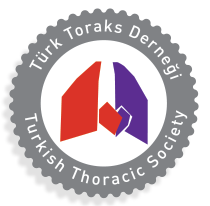Abstract
Objectives:
There is a debate about how to find optimal positive end-expiratory pressure (PEEP) in the current literature. Our aim was to determine whether arterial minus end-tidal carbon dioxide can be used to find optimal PEEP in acute respiratory distress syndrome (ARDS) patients.
Setting:
Eight beds, postsurgical intensive care unit of a university hospital.
Patients:
Eight patients with ARDS were included in the study. One patient was excluded due to desaturation in the initial phase of the study.
Interventions:
The patients were sedated and paralyzed. PEEP levels were applied in random sequence as 5, 10, 15 and 20 cmH^O.
Results:
PaCO2-PetCO2 gradient was 11.0 (2.8-20.0) at 5 cmH^Oshunt was decreasing although PaCC^-PetCCh decreased up to 15 cmH2O PEEP and increased at 20 cmH2O PEEP just as Vq/V-]-. PaCO2-PetCO2 gradient was minimal when PaO2 was maximal.
Conclusion:
PaCC^-PetCCb gradient is a useful and easily available parameter to find optimal PEEP in patients with ARDS.



